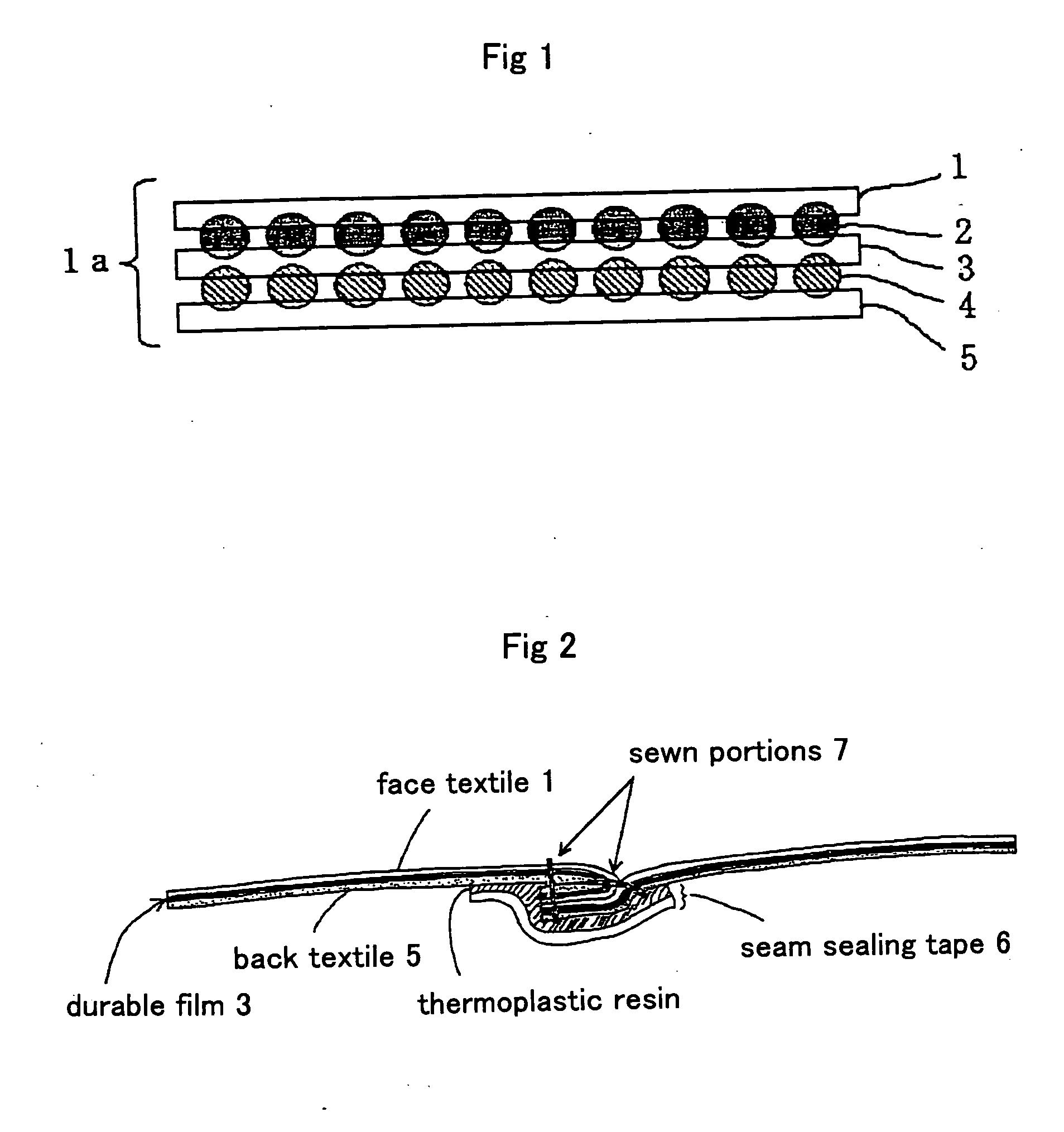Laminated fabric
a technology of laminated fabric and textiles, applied in the field of laminated fabric and textile products, can solve the problems of increasing the cost of starting materials, and inevitably reducing so as to improve the quality of finished products, and improve the effect of hand
- Summary
- Abstract
- Description
- Claims
- Application Information
AI Technical Summary
Benefits of technology
Problems solved by technology
Method used
Image
Examples
working examples
[0082] The present invention shall be described in detail below with reference to working examples.
working example 1
[0083] 18 g / m2 of a solution (water-soluble adhesive) comprising a mixture of 0.1 wt % of a surfactant (Asahi Chemical Industry Co., Ltd.; AG Stabilizer S) in an aqueous solution of polyvinyl alcohol (Sanwa Yushi Co., Ltd.; Poval detergent paste) was transferred at room temperature using a gravure roll that had a surface coverage of 45% to the polyurethane side of a composite film having a mass per unit surface area of 33 g / m2 that was fabricated from expanded porous polytetrafluoroethylene film (porosity: 80%, maximum pore diameter: 0.2 μm, average thickness: 30 μm) and a polyurethane consisting of a diphenyl methane diisocyanate and a polyol, resulting in a waterproof, moisture-permeable durable film. A roll was then used to press a plain-weave polyester fabric having a mass per unit surface area of 170 g / m2, a density of 174 threads / inch and 94 threads / inch respectively in the warp and weft directions, and a denier of 56 decitex and 71 decitex respectively in the warp and weft di...
working example 2
[0084] A laminated fabric (2) was made using a nylon plain woven fabric having a mass per unit surface area of 67 g / m2, a density of 120 threads / inch and 88 threads / inch respectively in the warp and weft directions, and a denier of 78 decitex for both the warp and the weft directions, with the water-soluble adhesive transferred to the durable film in Working Example 1 being used in an amount of 12 g / m2, and the other materials and methods being the same as in Working Example 1. The resulting laminated fabric (2) could be easily cut with scissors or a cutter knife without peeling. It was also confirmed that pieces of the cut fabric could be stitched together using a sewing machine.
PUM
| Property | Measurement | Unit |
|---|---|---|
| thickness | aaaaa | aaaaa |
| thickness | aaaaa | aaaaa |
| thickness | aaaaa | aaaaa |
Abstract
Description
Claims
Application Information
 Login to View More
Login to View More - R&D
- Intellectual Property
- Life Sciences
- Materials
- Tech Scout
- Unparalleled Data Quality
- Higher Quality Content
- 60% Fewer Hallucinations
Browse by: Latest US Patents, China's latest patents, Technical Efficacy Thesaurus, Application Domain, Technology Topic, Popular Technical Reports.
© 2025 PatSnap. All rights reserved.Legal|Privacy policy|Modern Slavery Act Transparency Statement|Sitemap|About US| Contact US: help@patsnap.com



